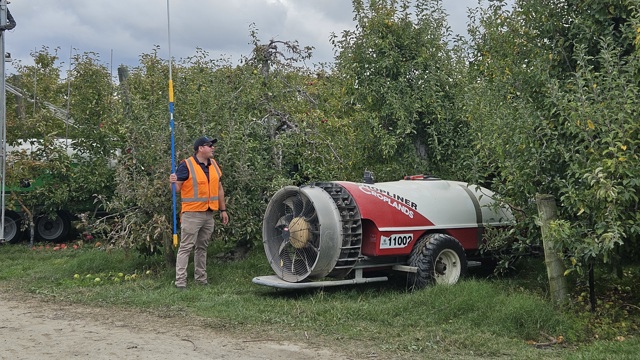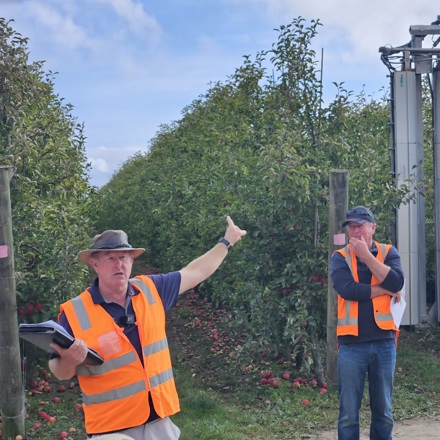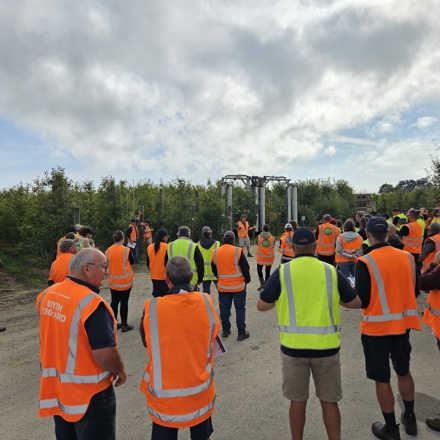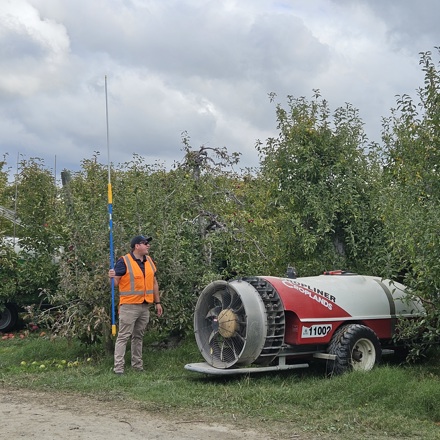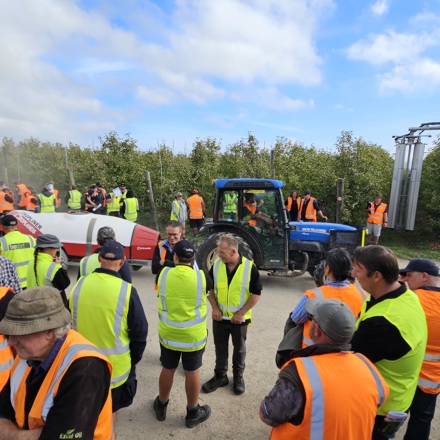Almost 100 growers turned out for a Spray Optimisation Day in April to hear about the most recent findings from Smart and Sustainable's spray research.
The value of understanding your spray equipment, spraying techniques and air optimisation were key focuses as Jonathan Brookes and Sean Gresham of Agfirst, and David Mankelow of Applied Research Technologies discussed their findings and how these can be incorporated into day-to-day activities.
“Effective spraying is more than just using the correct application rate at the right time. Getting good coverage is critical and must include managing air and being aware of individual sprayers strengths and weaknesses,” says NZAPI’s Anna Lambourne
“The aim of the field day was to share the latest research and discuss how it impacts pest and disease management best practice and on-orchard efficiencies."
Three sessions were presented by industry experts and supported by equipment suppliers Croplands, TRS, Hydralada and Hol Spraying, as well as the Blyth Orchard team. These sessions covered:
Sean Gresham – AgFirst - What are the challenges to spray coverage?
Gresham’s research looked at how air behaves once it leaves a sprayer, and how this has an impact – or not – on maximum coverage.
Results showed that air slowed down rapidly after it left the sprayer, so wider row spacing or taller trees required greater air output to guarantee coverage on treetops. Air volume also decreased as tractor travel speed increased, meaning an effective way to get more spray to the top of orchard was to reduce travel speed.
Jonathan Brookes – AgFirst – Optimising sprayer fit to target
Brooke’s session discussed the importance of understanding your spray equipment.
With no sprayer being perfect for all canopies and all conditions, it was important to understand the full picture, the strengths and weaknesses of each sprayer, the needs of each orchard block and the current conditions and capabilities of your operators.
The session discussed how once you have all this information; only then can you assess risk and make the spray decisions to get the best possible results.
David Manktelow – Applied research technologies – What can be changed on your sprayer to manage air for optimal coverage?
In his session, David worked through the different parts of a sprayer, including how to adjust fan types, fan pitch, fan gear, travel speed, RPM for best performance.
David provided some easy-to-follow operator guides on optimising air management and travel speed for 920DSv and TRS01 sprayers.

